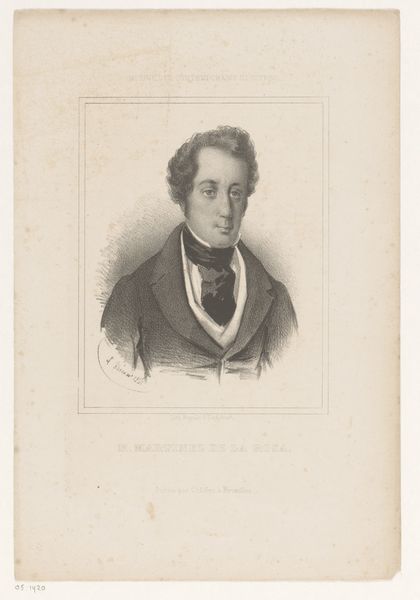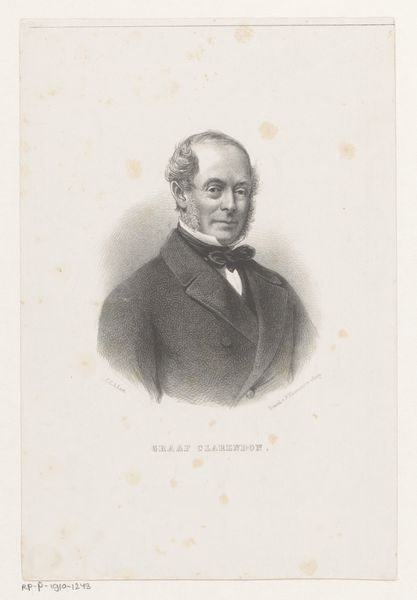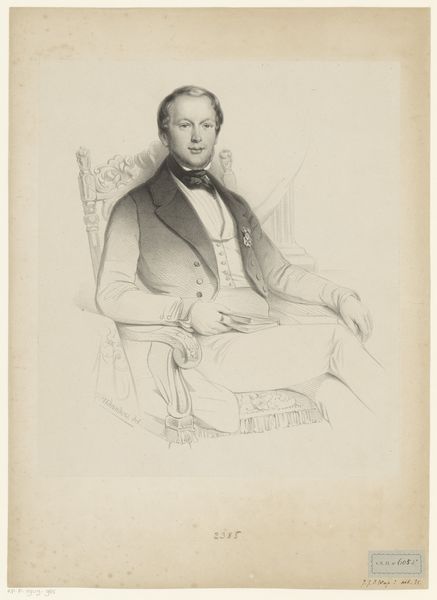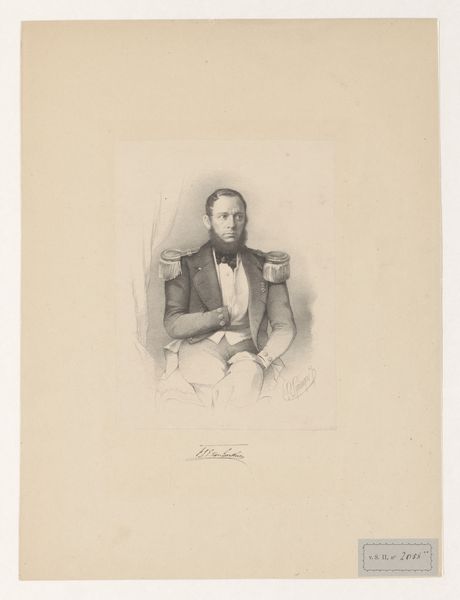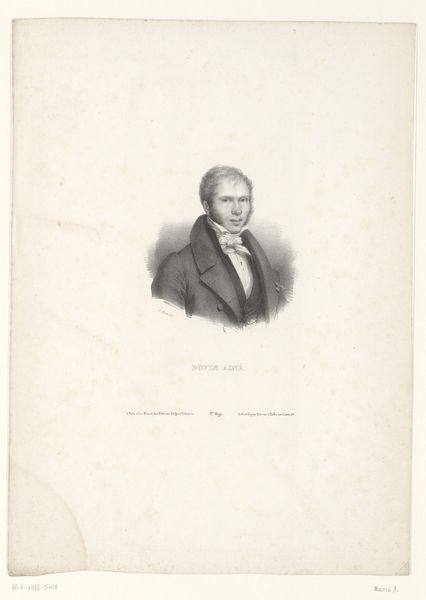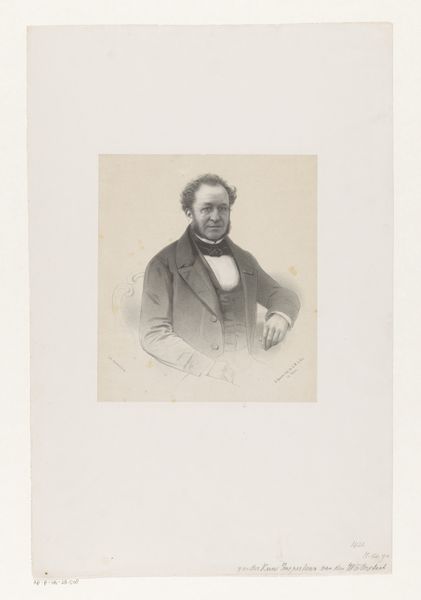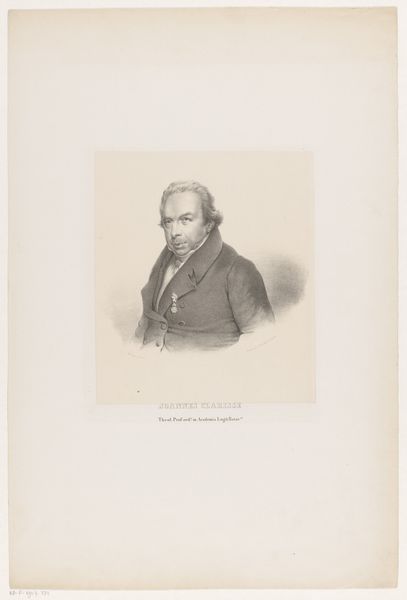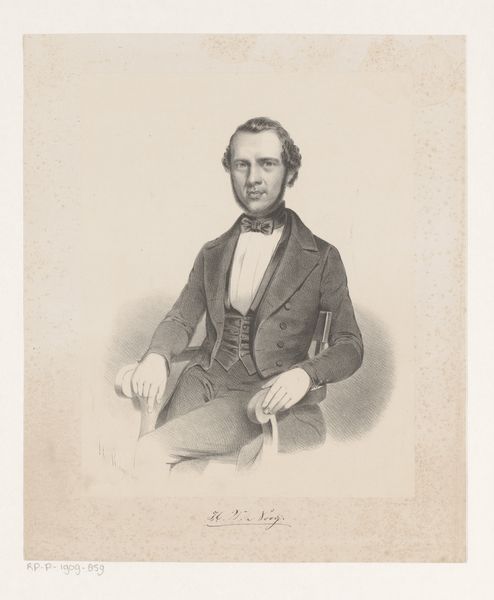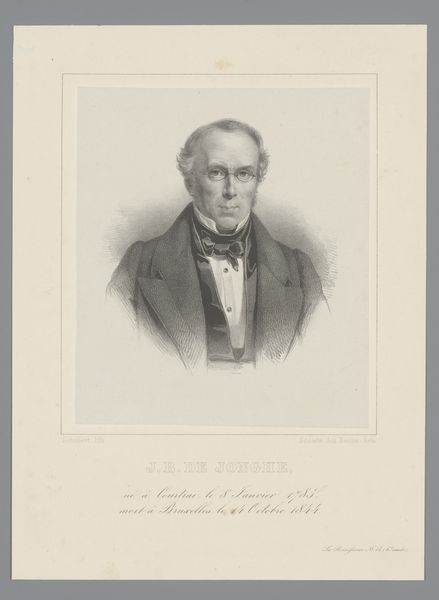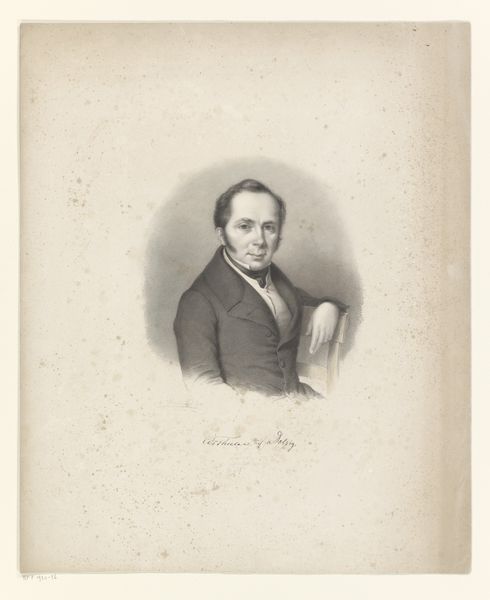
drawing, pencil, graphite
#
portrait
#
pencil drawn
#
drawing
#
pencil sketch
#
old engraving style
#
pencil
#
graphite
#
pencil work
#
academic-art
#
realism
Dimensions: height 215 mm, width 182 mm
Copyright: Rijks Museum: Open Domain
Editor: This is "Portrait of J. K. van den Broek," a pencil drawing from 1852 by Cornelis Philippus Groebel Jr., housed in the Rijksmuseum. There’s a real sense of gravitas, even sadness, in the subject's expression. What catches your eye, how do you interpret the symbolic language here? Curator: The gaze first. Direct, unwavering. Notice how Groebel used light and shadow – the darkened areas around the eyes contrasted with the highlights on the forehead – to intensify that feeling of melancholic contemplation. Think about what it meant to have your portrait drawn then. Editor: A status symbol, a memorial… Curator: Precisely. Portraits held a cultural weight that photographs only later assumed. The book, positioned prominently, speaks of knowledge, perhaps even societal role – hinting at intellectual or professional life of Van den Broek. Consider the meticulous detail, typical of the academic art style, meant to convey accuracy. It's not just about capturing a likeness, but communicating something deeper about the sitter. What unspoken narrative do you perceive? Editor: It’s interesting you point out the book – I hadn't really focused on that. Perhaps it suggests not just knowledge but the weight of it, the burden of responsibility? Curator: It’s an object that holds memory and meaning far beyond its physical presence in the composition. Even the slightly loosened cravat – is that a hint of discomfort, or a signifier of accessibility? The clues accumulate to tell a story beyond the visual. Editor: I’m starting to see it now, a web of possible interpretations woven into a seemingly simple portrait. Thanks! Curator: My pleasure. Each element carefully placed; each shadow intentionally cast. It invites endless exploration into cultural memory and symbolism.
Comments
No comments
Be the first to comment and join the conversation on the ultimate creative platform.


